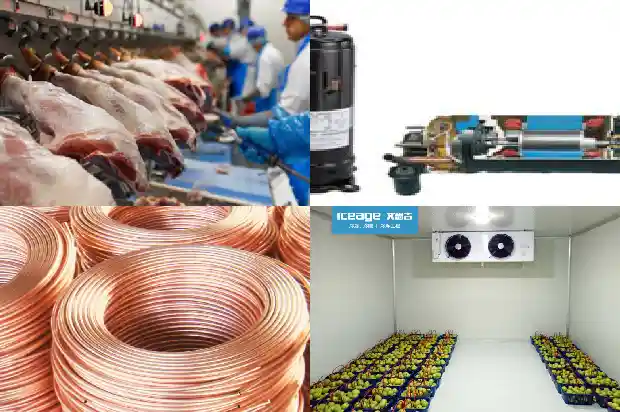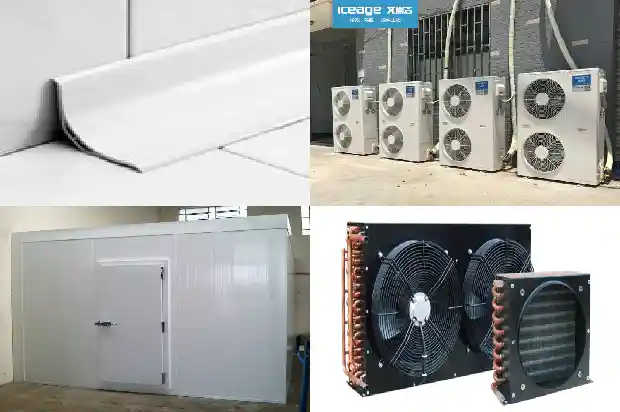A Brief Analysis of the Causes of Condenser Surface Temperature Rise
2025-04-06
What is mentioned here is the water - cooled condenser, which is mainly applied to water - cooled chillers. Its function is to condense the high - temperature refrigerant vapor discharged from the compressor into liquid refrigerant. It is an important device for the refrigeration system to release heat to the surrounding environment intensively and is one of the four major components of the chiller. Its quality directly affects the refrigeration capacity and refrigeration efficiency.
During the operation of the refrigeration system of a water - cooled chiller, the surface temperature of the condenser is generally close to room temperature, and it doesn't feel hot when touched by hand.

In general, the main cause of the temperature rise of the condenser is related to the cooling water, and there are usually the following four situations:
- The positions of the cooling water inlet and outlet pipes are installed incorrectly. The normal installation position is usually that the inlet pipe is at a lower position and the outlet pipe is at a higher position, that is, "low - in and high - out". If the position of the inlet pipe is high, the cooling water cannot completely fill and spiral in the condenser, the heat - transfer area will become smaller, and the refrigerant vapor cannot be effectively condensed, thus causing the surface temperature of the condenser to rise.
- The water quality of the cooling water is too poor, resulting in scale formation on the inner wall of the cooling water pipes in the condenser. This increases the thermal resistance, affects the heat exchange between the refrigerant and the cooling water, and reduces the heat - transfer effect. This kind of fault often occurs in chillers that have been used for a long time and not cleaned regularly. The solution is to remove the scale.
- The amount of cooling water is insufficient and the water pressure is inadequate.
The water - cooled condenser relies on the cooling water to carry away the latent heat released when the refrigerant vapor is condensed. Therefore, if the water pressure of the cooling water is insufficient and the flow rate fails to meet the rated requirements, the heat - dissipation capacity will be limited, ultimately causing the surface temperature of the condenser to rise. - The temperature of the cooling water is too high, higher than the rated operating temperature.
The higher the temperature of the cooling water, the smaller the cooling temperature difference of the refrigerant, the smaller the amount of heat transfer, the less effectively the refrigerant can be cooled, and the surface temperature of the condenser will rise.
Related Articles
- Analysis of Selection Techniques for Thermal Insulation Materials in Seafood Freezer Construction
- The Most Comprehensive Analysis of Water Pump Failures in History, Summarized by an Expert!
- Operation: Analysis of 20 Major Faults of Screw Compressors!
- Analysis and Solutions for Common Faults in Refrigeration Systems
- Analysis of Common Malfunctions and Treatment Methods of Cold Storage Equipment
- Analysis of Causes for Exhaust Malfunctions of Screw - type Chiller Compressors
- Analysis of Classification, Differences, Advantages and Disadvantages of Cold Storage Refrigeration Compressors
- A Brief Analysis of Quick - Freezing Cold Storage Design
- Analysis of the Causes of Frost Formation at the Suction Port of the Refrigeration Compressor
- Analysis of Common Faults of Chillers
- Analysis by Experts: Why Does the Four-way Reversing Valve Fail?
- Analysis of the Main Functions and Components of Refrigeration Air Conditioners
- Brief Analysis of Commonly Used Automatic Control Devices in the Refrigeration System
- Analysis of Common Auxiliary Components in the Refrigeration System One by One
- A Detailed Analysis of the Nine Reasons for the Low Pressure in the Refrigeration System!
- Analysis of the Working Process and Principle of Hot Fluoride Defrosting for Air Coolers
- Advantages and Disadvantages of Air-cooled Multi-connected Units and Analysis of Their Components
- Cause Analysis of High Discharge Temperature and Overload Protection of Modular Units
